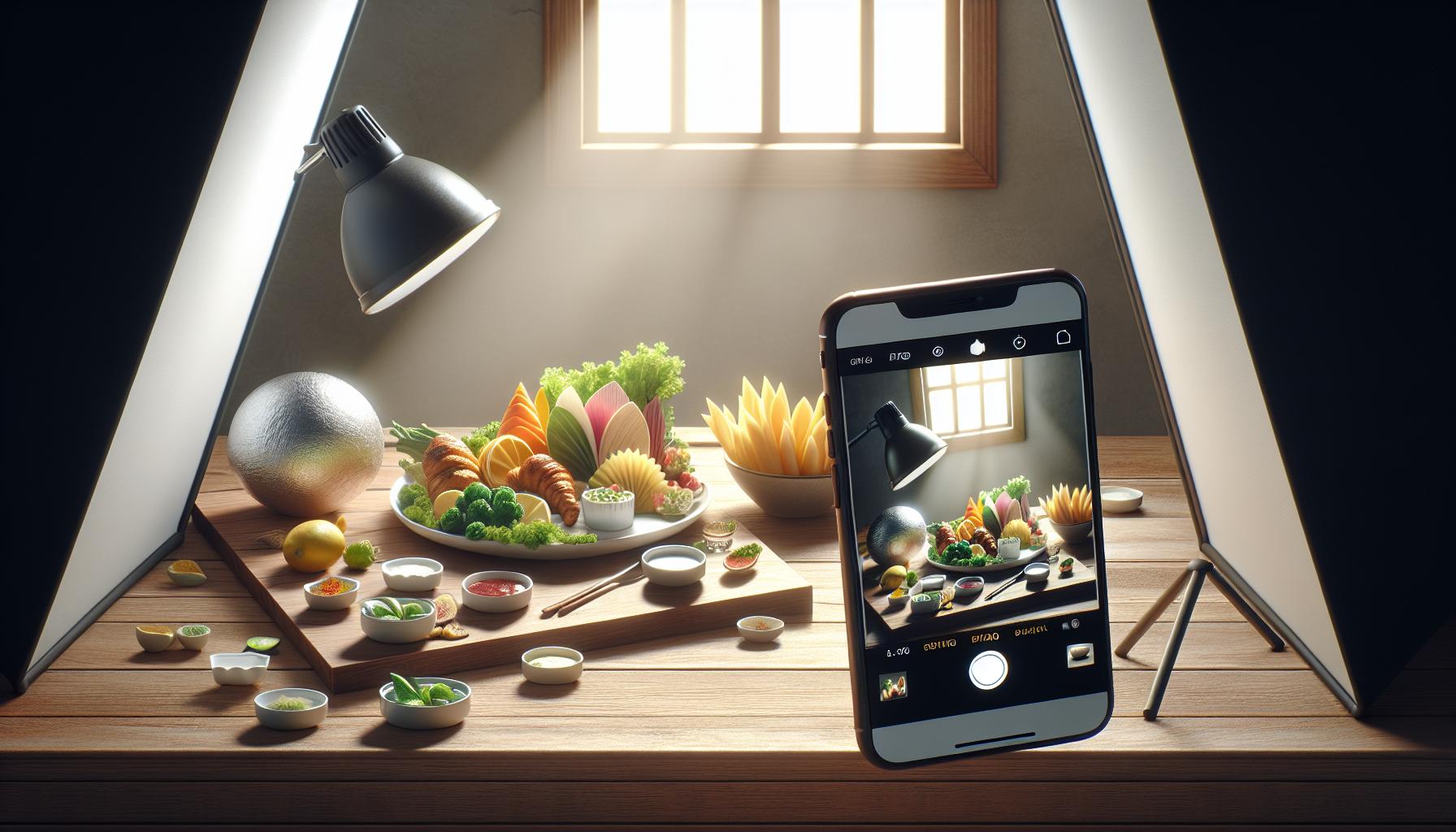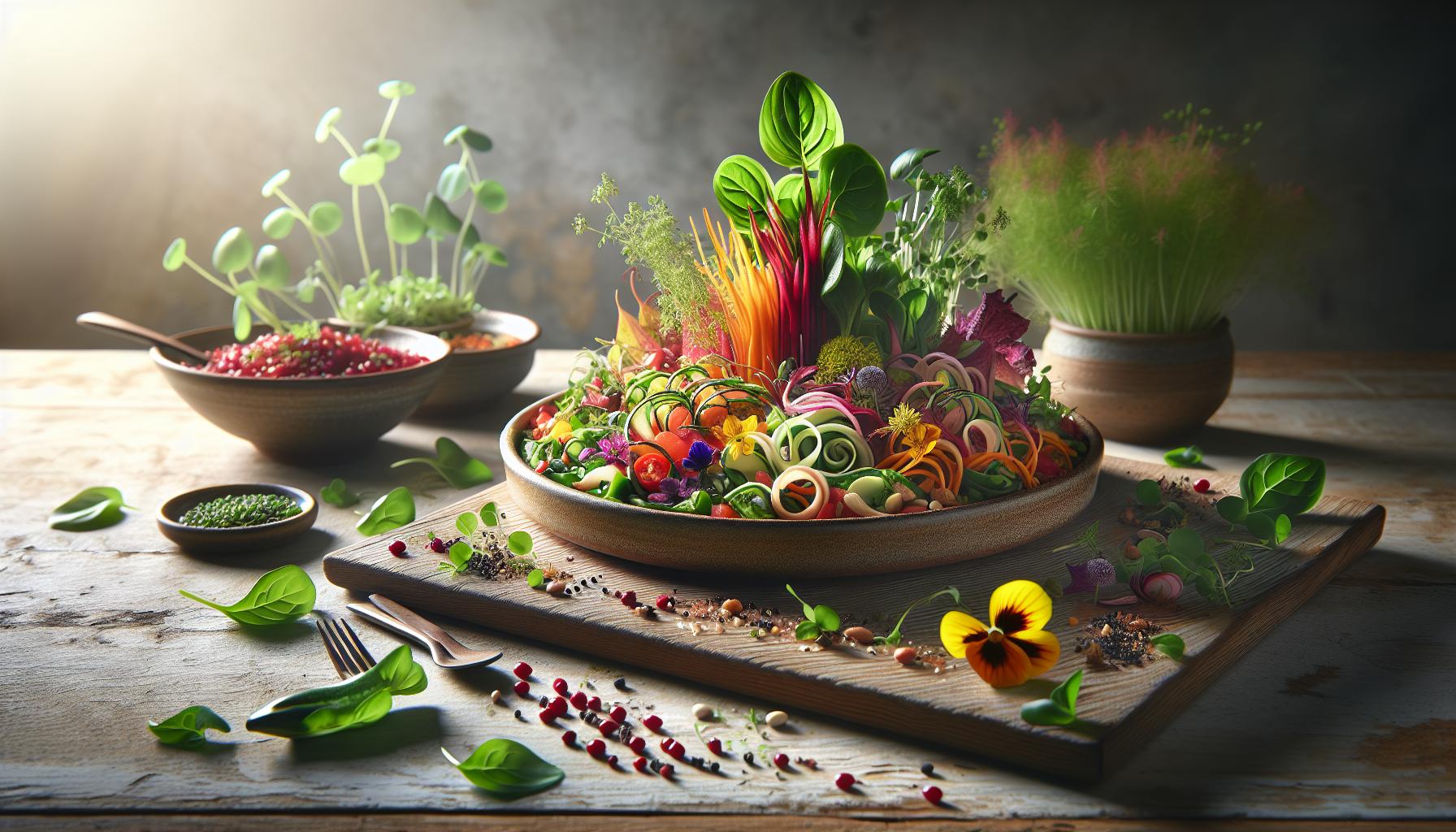Who needs a fancy DSLR when there’s an iPhone in your pocket? Food photography has evolved from a professional pursuit to an everyday art form thanks to these powerful mobile devices. With advanced camera features and clever lighting techniques anyone can transform their breakfast bagel into a magazine-worthy masterpiece.
The iPhone’s camera capabilities have revolutionized how people capture their culinary adventures. From casual food bloggers to professional chefs social media feeds are bursting with mouthwatering shots taken exclusively on iPhones. It’s not just about pointing and shooting anymore – it’s about mastering angles finding the perfect lighting and knowing which iOS features will make that pizza look absolutely irresistible.
iPhone Food Photography
The accessibility of iPhone cameras transformed food photography into a mainstream activity. Social media platforms like Instagram host over 500 million food-related posts, with iPhones capturing 69% of these images.
Three key factors drive iPhone food photography’s popularity:
- Advanced Camera Technology
- Built-in portrait mode creates professional-looking depth effects
- Smart HDR captures detailed highlights in challenging lighting
- Night mode excels in low-light restaurant settings
- Macro capabilities enable close-up texture shots
- Social Media Integration
- Direct sharing to multiple platforms
- Instant editing with built-in tools
- Real-time engagement with followers
- Location tagging for restaurants
- Restaurant Industry Adoption
- Digital menus featuring iPhone food photos
- Chef-created content for marketing
- Customer-generated dining experiences
- Virtual food tours through photo galleries
| iPhone Food Photography Stats | Percentage |
|---|---|
| Photos taken with iPhones | 69% |
| Restaurant posts using iPhone photos | 83% |
| Growth in food content (2022) | 45% |
iPhone food photography democratized culinary content creation. Restaurant owners document their dishes without professional equipment. Food bloggers share instant reviews with their audiences. Home cooks showcase their creations through high-quality iPhone photos. Tourism boards highlight local cuisine through user-generated iPhone content.
Essential iPhone Camera Settings for Food Photos

The iPhone’s camera settings create a significant impact on food photography quality. Proper configuration of these settings transforms ordinary food shots into professional-looking images.
Portrait Mode vs Regular Mode
Portrait Mode creates a professional depth-of-field effect by blurring the background while keeping the food in sharp focus. This mode excels at capturing individual dishes, plated meals, or specific food items at close range. Regular Mode offers a wider field of view, capturing entire table settings or multiple dishes in a single frame. Portrait Mode operates best at distances between 2-8 feet from the subject, making it ideal for overhead shots of plates. Regular Mode proves more effective for capturing food in natural settings, restaurant ambiance, or when dealing with reflective surfaces like glazed desserts.
HDR and Live Photos
HDR (High Dynamic Range) enhances food photos by balancing bright highlights with darker shadows, preserving details in both areas. This feature captures three exposures simultaneously, combining them to show textures in dark sauces while maintaining highlights on garnishes. Live Photos add movement to food imagery by recording 1.5 seconds before and after the shot. Steam rising from hot dishes, sauce being poured, or cheese pulls become dynamic elements in food storytelling. HDR performs optimally in challenging lighting conditions, such as outdoor restaurant settings or backlit scenarios.
Lighting Techniques for iPhone Food Photography

Lighting plays a crucial role in iPhone food photography, determining the final quality of culinary images. Proper lighting techniques enhance texture, color depth, and overall food presentation.
Natural Light vs Artificial Light
Natural light creates soft, even illumination that brings out authentic food colors and textures. Window light between 10 AM and 2 PM offers optimal lighting conditions for food photography, casting gentle shadows that add depth. Cloudy days provide diffused light, reducing harsh shadows and creating balanced exposure. Artificial lighting from LED panels or ring lights generates consistent illumination in low-light conditions. Restaurant lighting combines warm incandescent bulbs with LED spotlights, requiring specific iPhone camera adjustments for white balance. Professional food photographers use natural light 73% of the time due to its superior color rendering properties.
| Light Source | Best Time/Usage | Color Temperature |
|---|---|---|
| Window Light | 10 AM – 2 PM | 5500K – 6500K |
| LED Panels | Evening shoots | 4000K – 5000K |
| Ring Lights | Studio setups | 3200K – 5500K |
Using Reflectors and Diffusers
Reflectors bounce light onto shadowed areas of food, creating balanced exposure across the image. White foam boards reflect 80% of available light, making them effective portable reflectors. Silver reflectors increase contrast and highlight texture in dishes. Diffusers soften harsh direct sunlight, creating even illumination across food surfaces. Translucent paper or fabric diffusers reduce light intensity by 50%, eliminating unwanted glare. Professional food photographers position reflectors at 45-degree angles to the main light source for optimal results.
| Reflector Type | Light Reflection | Best Distance |
|---|---|---|
| White Foam | 80% | 12-18 inches |
| Silver | 95% | 18-24 inches |
| Translucent | 50% | 6-12 inches |
Food Styling Tips for Instagram-Worthy Shots

Food styling transforms ordinary iPhone food photos into captivating visual stories. These techniques enhance presentation while maintaining authenticity.
Plating and Composition Basics
The rule of thirds creates visual balance in food photography by dividing the frame into a 3×3 grid. A centered plate placement works for symmetrical compositions, while off-center positioning adds dynamic interest. White space around the main dish draws attention to the focal point, with 30% of the frame remaining empty. Fresh garnishes like microgreens or edible flowers add color pops in strategic positions. Layering ingredients at different heights creates depth, starting with larger elements at the bottom and working up to delicate toppings. Creating diagonal lines with food elements guides the viewer’s eye through the composition.
Props and Background Selection
Neutral backgrounds enhance food colors without competing for attention. Textured surfaces like marble, wood or concrete add depth while maintaining focus on the dish. Small props complement the main subject: vintage silverware, linen napkins or ceramic plates in muted tones. The 60-30-10 color rule balances the composition: 60% background color, 30% plating elements, 10% accent pieces. Props scale matters – smaller items make food portions appear larger. Natural materials like wooden boards or stone slabs provide authentic staging environments. Seasonal elements like fresh herbs or appropriate tableware reinforce the dish’s context.
Best iPhone Photography Apps for Food
Specialized photography apps enhance iPhone food images through advanced editing features color correction capabilities. These apps transform basic food photos into professional-quality content for social media platforms restaurants.
Editing Apps
Popular food photo editing apps include Snapseed VSCO Foodie. Snapseed offers selective adjustments brush tools white balance controls specifically designed for food photography. VSCO provides premium filters that enhance food colors while maintaining natural appearances with presets calibrated for culinary images. Lightroom Mobile includes advanced color grading tools masking options that isolate specific elements of dishes. Here’s a comparison of top editing apps:
| App Name | Key Features | Price |
|---|---|---|
| Snapseed | Selective editing, healing tool | Free |
| VSCO | Food-specific filters, advanced tools | $19.99/year |
| Lightroom | Professional editing suite | $9.99/month |
| Feature | Benefit |
|---|---|
| Manual Focus | Precise control over focal points |
| RAW Capture | Enhanced editing flexibility |
| Custom WB | Accurate food color representation |
Common Food Photography Mistakes to Avoid
Overexposure creates washed-out colors in food images when shooting near windows during peak sunlight hours. Dark shadows form distracting elements in photos taken with overhead indoor lighting fixtures. Blurry images result from camera shake during low-light situations without proper stabilization.
Temperature variations affect food appearance, causing melted ice cream or congealed sauces to look unappetizing. Moving too close to dishes creates distorted perspectives that fail to showcase the complete presentation. Crowded compositions with multiple dishes compete for attention rather than highlighting a single focal point.
Common mistakes include:
- Photographing cold dishes after they develop condensation
- Shooting with mixed lighting sources that create color casts
- Using flash directly on food which produces harsh reflections
- Arranging food without considering negative space
- Missing optimal angles by shooting only from eye level
- Selecting busy patterns or bright backgrounds that distract from food
Setting adjustments impact quality:
| Setting Error | Impact on Photo |
|---|---|
| High ISO | Grainy texture |
| Slow shutter | Motion blur |
| Small aperture | Lost detail |
| Auto white balance | Incorrect colors |
Timing affects food presentation, with hot dishes losing steam after 30 seconds. Fresh ingredients wilt under continuous lighting within 5 minutes. Sauce separation occurs if photos take longer than 2 minutes to compose.
Editing mistakes compromise authenticity through oversaturated colors or extreme contrast adjustments. Applying heavy filters diminishes natural food textures. Excessive sharpening creates artificial-looking edges around ingredients.
Lasting Impact on Digital Food Culture
iPhone food photography has revolutionized how we capture and share culinary experiences. The combination of advanced camera features sophisticated editing apps and proper techniques has made it possible for anyone to create stunning food images.
Whether you’re a restaurant owner food blogger or amateur photographer the iPhone serves as a powerful tool for showcasing the beauty of food. By applying the right lighting techniques following styling guidelines and avoiding common mistakes everyone can elevate their food photography game.
The explosive growth in iPhone food photography on social media platforms demonstrates its lasting impact on digital food culture. As iPhone camera technology continues to evolve we can expect even more innovative ways to capture and share mouthwatering moments.

